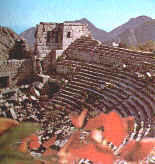|
|
Mark Anthony once gave part of Turkey's Southern shore to Cleopatra as wedding gift. Indeed, this coast has everything befitting so princely a gift.
Set against the often snowcapped peaks of Taurus Mountains are the seemingly endless stretches of white sand, lapped by the translucent waters of Mediterranean, which perhaps because of its crystalline quality, Turks call "Ak Deniz" or "White Sea".
Verdant shores are covered with pine forests, orange groves and banana plantations, splashed here and there with the vivid pink of wild oleanders.
Here legend and history are interwoven into the background fabric of this colorful region. In the mountains of West of Antalya is Chimera, the fire-breathing monster that the hero Bellerophon slew.
Behind Antakya are the bay trees of the gardens of Daphne, where the nymph was turned into bay tree by Zeus to escape the amorous advances of Apollo. Turning to more historical facts, it was from Tarsus that St. Paul came, and in Demre, St. Nicholas or "Father Christmas" once lived.
Like Turkey's Aegean coast, her Meditrranean coast is also littered with ancient ruins. Atop craggy peak to West of Antalya, like eagle's nest, are the ruins of Termessos. On the coastal plains are Pamphylian cities of Perge, Aspendos and Side.
Perge's great stadium could seat 15,000 and the theatre of Aspendos is the best preserved in Anatolia, while the ruins of Side are elegantly set on promontary between two sandy bays.
The major resort city of the region is Antalya, which possesses one of the finest setting on Meditrranean, with the crescent of Konyaalti Beach, sweeping away to the precipitous Lycian mountains in West.
To the East of the city is Lara Beach, near where Duden Waterfalls plunge off a cliff into the sea. It is founded in 2nd century BC and has pretty yacht harbor and is dominated by the curious Fluted Minaret.
West of Antalya is the attractive resort of Kemer, where pine woods stretch right down to the sandy shore and near which are the ruins of ancient Phaselis.
East of Antalya is a whole string resorts, beginning with Side. Further along the coast is the former pirate stronghold of Alanya, which Seljuk Sultan Alaeddin Keykubad made his winter residence. Commanding a rugged promontory between two sandy beaches is an imposing 13th century Seljuk castle. At Anamur, Southernmost point of Asia Minor, there is yet another mediaeval castle set between two beaches.
The road from Anamur to Silifke clings to pine clad mountain slopes, which plunge spectacularly down into Mediterranean. Running through Silifke is Goksu River, the ancient Calycadnos, where Emperor Frederick Barbarossa drowned in the Third Crusade.
Beyond Silifke are the chasms known as "Heaven and Hell", which are in fact collapsed caverns. In the chasm of "Heaven" is a ruined Byzantine chapel. A little way on, at the pretty resort of Korykos, there is mediaeval castle on the shore, facing another one on an island.
More broken columns and fallen capitols mark the sites of such Roman as Kanytelis and Pompeiopolis on the way to Mersin. Though Mersin has the appearance of modern port city, the site is ancient, dating back to Paleolithic times.
From Tarsus, the land flattens out into the cotton growing Cukurova Plain. In the middle of the plain is the prosperous city of Adana, the center of Turkey's cotton industry.
The Eastern part of Cukurova Plain was known in classical times as the Plain of Issos, and it was here that Alexander the Great defeated Darius. After this victory, Alexander founded the port of Alexandretta, now called Iskenderun. From Iskenderun, the road leads through Belen Pass to Antakya, Biblical Antioch, where St. Peter founded the first Christian community. The grotto, where he preached, can be seen just outside the town.

Termessos
|
|

